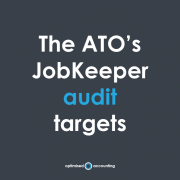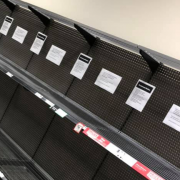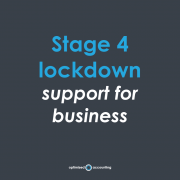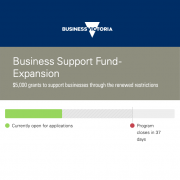As you well know, the COVID-19 pandemic is not just a public health issue, it’s also caused lockdowns and resulting financial worries on a global scale.
In Melbourne alone, we’ve had 6 lockdowns over 2 years, tipping us over 200 days in total in our homes.
Small businesses are not strangers to the impacts of the pandemic. Almost all business sectors have been experiencing declining profits, liquidity that is drying out, and even bankruptcy.
If you want some tips on how to hit the ground running now that lockdowns have been lifted, this guide will outline the steps to get your business back on track.
Assess the Damage
Before taking any action, the first thing you need to do is to assess the financial impacts the pandemic has had on your business. You can determine the impact by checking your key numbers.
Take a look at your:
- financial statements
- profit and loss
- cashflow statements
Compare your data to the previous year (or 2 years, considering how long we’ve been in lockdowns).
If you have any questions about the financial side, please feel free to ask us.
Aside from knowing and understanding your numbers, you also need to be mindful of any other ways that your business has been adversely affected. You have to account for certain factors when preparing a plan to rebuild. Such as:
- the reduction in your workforce
- customer churn
Rethinking Your Business Plan
What may have worked for your business before COVID-19, may not deliver the same results in the current climate, or the post-pandemic world. Now is a good time to fine tune your business model and think about how you can pivot and adapt.
For example, some people may still remain cautious about going to physical stores even if lockdowns are easing. That means you could consider strengthening your online presence and digital capabilities to accommodate customers who prefer online shopping.
As you rebuild your business, you need to pay attention to trends in your industry as a whole and try to spot untapped opportunities. Be aware of your business’ strong and weak points and adjust accordingly.
As the coronavirus seems to have flipped the business world on its head, it might also be time for you to revisit the goals you’ve set to make sure that they are still feasible given the current market conditions. After setting realistic goals, you will then need to adjust your action plan to get towards those goals.
Additional Funding for Your Recovery
JobKeeper has ended, but there are some other support available.
You might qualify for:
- rental support from your landlord
- rates support from your local council
- a government backed business loan
- Apprenticeship subsidy
- outdoor activation voucher
- Digital Adaptation program
Chat to us to find out what’s best for you.
Assess Your Budget
As we come out of lockdowns, expect that you will have to spend money before you can make money. For instance, if you had to lay off employees when the coronavirus hit, you may have to spend money on hiring and training new employees if you can’t rehire the people that you had to let go.
You might also need to prepare for additional spending on:
- cleaning
- inventory
- marketing
Whatever your additional costs are, the key is to have a clear idea of the necessary spending that you need to budget for and which ones can be reduced or eliminated so you can make the most of the revenue that is coming in.
As much as possible, keep your operating budget lean so you have the capacity to invest in future growth opportunities.
Develop a Timeline
As much as you want to get all business matters sorted out at once, this is far from realistic.
Try to take stock of where everything is up to and decide what to prioritise. From there, create a timeline that you will follow to get your most important business activities done first.
While you accomplish the steps in your action plan, make sure that you’re tracking your progress. If possible, do a weekly check of what’s working and what’s not, and then make the necessary tweaks. Don’t waste time and resources on business activities that are not producing a solid return on investment.
As your business starts to return to normal, you might transition to reviewing your financials on a monthly basis.
Prepare a Contingency Plan
The COVID-19 crisis is a wake-up call that shows us unexpected events such as this can disrupt your small business at any time. Learn from this experience and prepare a contingency plan that will cushion your business from possible future shocks.
Aside from thinking outside the box and having a Plan B (and even a Plan C, D, and E) that will help you prepare for the worst, there are some things you can do.
Improve your position in tough times by:
- building up your cash reserves
- paying down your debt
- cutting down on non-essential spending
- increasing operational efficiency by streamlining processes and boosting your employees’ productivity.
Leading Your Business Towards Recovery
While COVID-19 has affected nearly every person and business in some way, you should take into your own hands the task of finding the light at the end of the tunnel. In order to cope with the changes and find your way to the so-called “New Normal”, you must be agile enough to step up your game and confront the business challenges now and in the uncertain times ahead.
While you prepare to get your business back to full speed, it also helps to have a business expert to guide you in rethinking your business strategy and rebuilding your business into a more resilient one. If you need personalised advice about your specific situation, get in touch with us so we can work out a plan.
Read about how we work with businesses over here.
Be even more on top of business pitfalls
You’re a business that stays in tune with your finances to stay ahead. So does our newsletter, so come on board for more heads-up:










